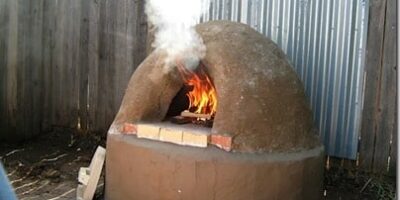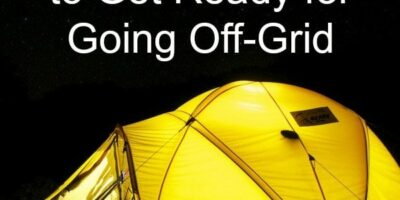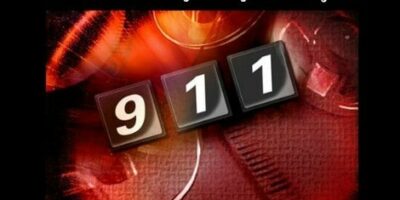


In North America, we are enjoying the final months of summer. This is a time for family activities, picnics, BBQs with friends and perhaps a weekend camping trip. There is also the usual rash of summer chores: mowing the lawn, washing the car, weeding the garden and the more mundane tasks of laundry and housecleaning.
I don’t know about you, but I would much rather be enjoying the fun in the sun than serious prepping this month. For that reason, this month we are going to do things that are a natural outtake from our summer activities. That said, we are not going to slough off and disregard the tasks at hand as frivolous. For even though they seem rather menial, they are as important and as necessary as the prepping tasks in each of the previous months – and in some ways even more.

Rocket stoves and outdoor grills are great for cooking in a pot or skillet when the power is down or non-existent following a disaster or a worst case SHTF situation where fuel is either flat-out unavailable or intolerably expensive.
How to build a mud oven for use now and when the SHTF.

More and more these days I find myself baking from scratch. There are the artisan breads, the automatic bread maker breads and more recently artisan pizza. All of these hand baked items are far superior to store bought – no sneaky ingredients or preservatives that I can not pronounce – plus, they cost pennies to make. (Actually, about 50 cents which is still far less than $4 or more for store bought in my my neck of the woods.)
And then there are sweet breads or loaves. Not quite cake but not quite bread either. These are the banana breads and zucchini breads that are favored as a breakfast treat or bed time snack.

Earlier this month attended a 9 hour course on handgun safety and use. I called it “going to gun school”. On the drive to the armory, I was anxious, apprehensive, scared and a little bit intimidated. Luckily, I learned that these were normal feelings for a handgun newbie such as myself and that it I had been licking my chops in anticipation of the experience, perhaps I was a bit of whacko.

As I do each month, I would like to begin month ten with a little pep-talk on preparedness. As the recent power outages, wildfires, and storms have proven, a disaster can happen anywhere at anytime. Although FEMA, the Red Cross and local agencies are going to do their best to mobilize and help you, there are a lot of people out there that will need assistance. Wouldn’t it be better to rely on your own resources instead?
Being an optimist, I can only assume that if you made it this far, you are well on your way to being self-sufficient in an emergency. And based upon the emails that I have been receiving, I know positively that a number of you are following along each month. As with the previous months, month ten is not overly difficult but it will take some time and it will take some effort.
More specifically, this month we are going to take a break from purchasing gear and supplies. Instead we are going to focus on disaster readiness and more specifically, earthquake preparedness and and an actual practice drill so you can anticipate what happens when you go off grid.

An updated version of this article can be found here: Six Ways to Get Ready for Going Off-Grid.

Earlier this year, I ran across an blog post on the Directive 21 site that asked the question: What if Nothing Happens? The context was that of prepping. You know what I mean: the time, the expense, the worry, the whole shebang. Is it worth it and more to the point, will all of this effort be wasted?
Now I happen to know that a lot of naysayers out there will point to the year 2K brouhaha as an example of why prepping if folly. Myself, I like to think that I bring a very unique perspective to that particular time since, as an old COBOL programmer, I knew how the computer code of old would blow up with the turn of the millennium. I also know many people who were frantically involved in code conversions and even I provided a bit of consulting to the telecommunications industry in that regard.
So why was Y2K a non-event? I would say that the diligent preparation on the part of governments and businesses played a really huge role in insuring that our utility companies continued to work, the ATM machines continued to function and that daily life continued without a hiccup. (That is not to say that I did not have $5,000 in small bills hidden under my mattress, however.)
Coming back in to the present, we have six more months for the Doomsday 2012 events yet to unfold. And now that the end of the Mayan calendar has pretty much been dispelled, what is left?

Here’s the deal. It’s the weekend (or, like me, you are on vacation in the middle of the ocean) and your tooth starts to hurt. The pain has become so bad you can not eat, can not concentrate and whoa! you can not even enjoy yourself and have fun. What’s a gal or guy to do? . . . Let me let you in on a secret: you can temporarily mitigate the pain and suffering with with oil of clove, an inexpensive and readily available essential oil. Here is what you do.

Buddha (c. 563 BC to 483 BC) is credited with saying: “To keep the body in good health is a duty, otherwise we shall not be able to keep our mind strong and clear.”
Now it seems to me that if the world were to drastically change in a TEOTWAWKI situation, having a strong and clear mind would be paramount to survival. And yet, as we plan for such an event, how much of our effort is spent on the matter of good health in the here and now? Not as much as we could and should I say.
The reasons are simple. It is just easy to continue to do things the way we always have. Some chips with our burger, a nice piece of pie for desert, and oh yeah, what about the can of soda to wash it down?
I have always been interested in diet and nutrition, most likely because I was an overweight child and have struggled to maintain trim my entire life. For the most part I have won the battle but now I also face the dreaded prospect of aging, and am acutely aware that what goes in can materially affect both how I look and how I feel as I get older.
Antioxidants – What are they?

There is no question about it. I am a some-times recluse. I enjoy my home, my dog and my little family of two and can go for days without talking to anyone else outside these four walls. Given a choice of staying home and watching a classic period piece on TV or going to a party with dozens of people, well, the choice for me is clear.
Yet from time to time, it feels good to be a social butterfly. Get me out on the dance floor or at a small gathering and I will bloom and shine. And so it is. We as humans crave our privacy while at the same time we long for the intensiveness of a satisfying social experience.
So how do we find the right balance, especially when it comes to living the preparedness lifestyle? On the one hand we need to feel secure that our “stuff” is safe and that out painstakingly gathered preps will be there for our use when and if we need them. On the other hand, we need to defend ourselves, our homes and our loved ones from physical harm. Is this something we can do on our own in isolation or would we be better served with some help?

These days it is easy to by cynical about government, be it Federal, State, County or City. And yet in spite of the inefficiencies, the crooked politicians and the questionable use of taxpayer funds, there are still some good – if not excellent – and valuable resources available to all of us.
One of those services is 9-1-1, the national (in the United States and Canada) Emergency Telephone Number .

In the effort to prepare for a disaster or an emergency, it is easy to overlook the need to maintain an adequate cache of common household tools. For some, having household tools means a hammer and a screwdriver of two. but really, is that going to get you by if there is no handyman available to call? . . . It is time to summon the inner Tim-the-tool-man.

We have now passed the half way point and are entering month seven of preparedness. By now you should be feeling secure in the knowledge that you are ready to beat the odds should a natural disaster or crisis appear in your area . . . . .
The gear and tools we are going to purchase this month are lifesaving and useful in many types of situations. Add to that an essential skill that everyone should learn and we have a two-punch whammy for seeing you through disasters, accidents, health care woes and more.

As a baby boomer, I grew up in the shadow the Cold War along with the proliferation of nuclear power. Back in the day, we called this the onset of the “Atomic Age” and it was something to be heralded with anticipation for a better world . . . But something happened along the way . . . whether you believe the authorities or not when it comes to radiation safety, the best thing you can do now is learn how to limit radiation exposure following a nuclear incident.

More than a few of my readers have asked about an efficient, affordable and extremely portable everyday carry kit, often referred to as an EDC. I have been reluctant to respond because everyone’s needs – or perceived needs – are different. But there is one thing most of us have in common and that is the need to have on our person a few essential items that will get us through a myriad of unpredictable circumstances . . . . With that introduction, I would like to suggest five pieces of gear that should be in every backpack, every purse and every glove box. The list is a simple one and while the sky is the limit when it comes to gear, the entire kit can be put together with quality items for less than $50.

Mention pinto beans and most people simply shrug their shoulders with disinterest. Even I used to do so. After all, when you walk down the supermarket isle and browse in the bean section there are all kinds of neat beans with far more exotic and enticing names. How about Cannelli, Anasazi, Adzuki or even those sexy Black beans. So many really neat beans – why settle for the pinto?
The pinto bean is typically the cheapest bean on the shelf, whether in the traditional dried form or in cans. Does being cheap make it less attractive? I think not. Because when it comes to beans, cheap, or shall I say thrifty, is a good thing. And not only the that, the pinto is sturdy enough to withstand inexact cooking methods without turning to mush in an instant.
Let me describe these little fellas for you. The Pinto bean is light beige in color with added reddish brown splashes of color. They are kind of cute in as much as a bean can be cute. The name “pinto” comes from the Spanish term for painted. Like magic, when the pinto is cooked, it becomes a nice pink color, almost like the blending of the beige the red on a painters pallet. Neat.